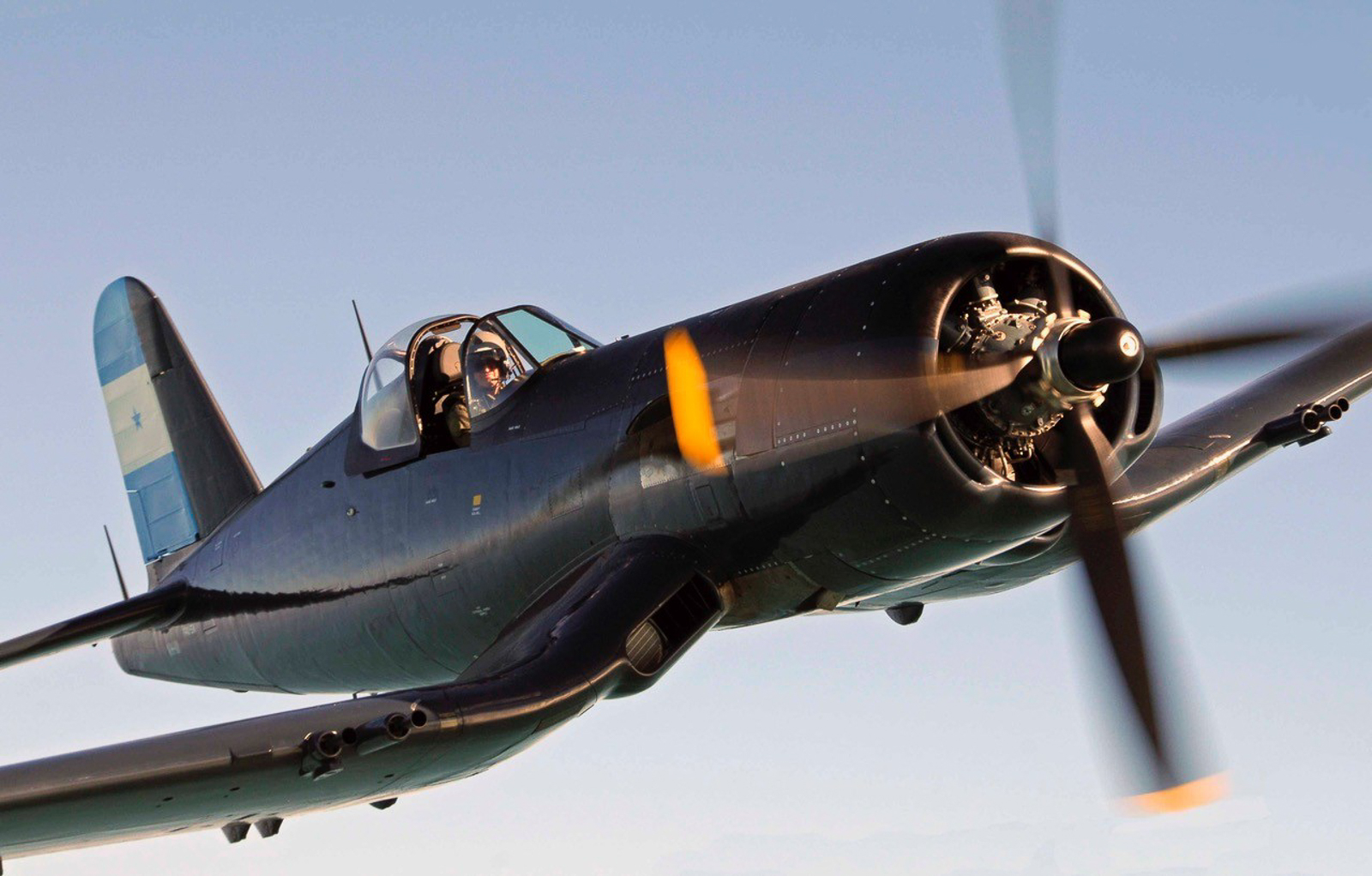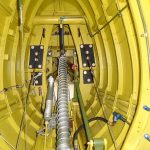The Vought F4U Corsair is, without doubt, one of the most potent and charismatic fighter aircraft to emerge from WWII. With its unconventional, inverted gull-wing profile and brutish good looks, not to mention its legendary accomplishments, it is no wonder that the type has captured the imaginations of so many aviation-minded people. The aircraft is of complex manufacture though, with its largely spot-welded construction and all-but impossible to re-manufacture main spar. However, the Corsair has been experiencing a renaissance of sorts in recent years, with the restorations of several projects previously thought impossible to complete. Even so, Corsairs rarely come up for sale on the open market, and command significant attention when they do.
As it happens, one of our sponsors now has a magnificently restored example available for the discerning collector. Platinum Fighter Sales recently listed Graham Hosking’s former Honduran Air Force F4U-5N for sale in Tyabb, Australia. Nobby Bartsch restored this fighter for Hosking to her present pristine condition at his shop, Aerotec, in Darwin, Australia over a seventeen year period. Currently residing on the Australian Civil Register as VH-III, this Corsair is a night fighter variant. She rolled off Chance-Vought’s production line in Dallas, Texas during 1951 under a U.S.Navy contract. This Corsair, was one of about twenty examples which the Fuerza Aérea Hondureña, the Honduran Air Force, acquired via various avenues during the mid-1950s.
The Honduran government parted with their Corsairs in the late 1970s, although they retained one example, F4U-5N Bu124715/FAH609, for historical purposes. This is the aircraft in which Major Soto Henriquez reportedly downed two F-51 Mustangs and an FG-1D Corsair during combat against El Salvador on July 17th, 1969 – the last time piston-engined fighters fought each other in the skies.
The Hondurans sold the rest of their Corsairs as a job lot to Hollywood Wings of Long Beach, California during 1978. Seven of these Corsairs were complete, and in good enough condition to fly under their own steam back to the USA (just!), while the dismantled components from ten other examples made the journey by rail.
The aircraft which Hollywood Wings acquired included the following:
Model Bu.No. FAH Serial Delivery Method
F4U-4 Bu.96885 FAH618 rail
F4U-4 Bu.96995 FAH614 flew
F4U-4 Bu.97059 FAH617 rail
F4U-4 Bu.97280 FAH615 flew
F4U-4 Bu.97288 FAH612 flew
F4U-4 Bu.97320 FAH616 rail
F4U-4 Bu.97382 FAH611 rail
F4U-4 Bu.97388 FAH610 rail
F4U-4 unk unk rail
F4U-5N Bu.122179 FAH604 flew
F4U-5N Bu.123168 FAH603 rail
F4U-5NL Bu.124447 FAH602 rail
F4U-5NL Bu.124486 FAH606 flew
F4U-5 Bu.124493 FAH608 rail
F4U-5NL Bu.124560 FAH601 flew
F4U-5NL Bu.124692 FAH607 rail
F4U-5N Bu.124724 FAH600 flew (after repairs for belly landing)
The epic flight of the seven Corsairs which made the daring journey home by air has been documented elsewhere, but is worthy of a movie! All of them made it safely back to the USA, although one of them, Bu.124724, had to belly land enroute in Belize due to a landing gear malfunction. Even so, the durable fighter made it home by air following a period of frenetic repairs.
The ten examples which came home by rail did so in component form. In those days, there wasn’t as much worry about which parts went into which aircraft upon reassembly. It was often simply a case of matching together whichever parts fitted together most expediently. As such a number of airframes from the group coming by rail ended up with as a mixture comprising parts from various airframes. Such is the case with VH-III. After much sleuthing, the restorers believe that her center section came originally from Bu.123168/FAH603, so that is how they identify her. Without doubt though, she is an exemplary example of her breed, as Rob Fox’s photographs so ably testify! [Many thanks to Rob Fox for granting permission to use his photos!]
Her journey to Australia is an interesting story. The Walt Disney Company bought the aircraft in 1987, gifting it to the Royal New Zealand Air Force in exchange for their assistance in making the film, The Rescuers. The RNZAF Museum hoped to convert the aircraft into an earlier F4U-1D variant to represent one of the many such Corsairs which they operated during WWII. However, they pretty quickly realized that this would not be an easy exercise. Instead, in 1996 they exchanged the airframe for Graham Hosking’s Merlin-engined Warhawk project (P-40F 41-14205 – which they have since restored as a P-40E). Graham then began the long, long effort to restore this aircraft, which finally culminated in a triumphant first flight in May, 2014. The fighter is currently the only airworthy example to wear its Honduran markings, which only adds to its exotic nature – the fighter is sure to turn heads wherever she goes!
For her current specs visit Platinum Fighters














































